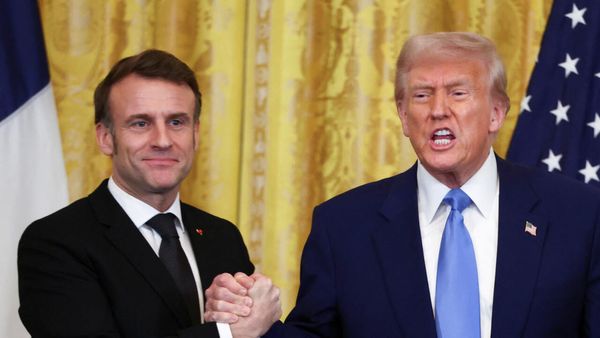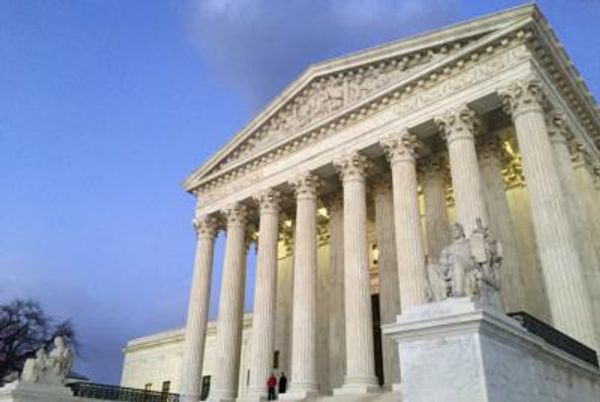The Federal Reserve is likely to deliver its third consecutive outsized rate hike Wednesday as it expands its fight against the fastest inflation in more than four decades while repeating its warning that doing so will cause "pain" for the world's biggest economy.
The CME Group's FedWatch tool suggests an 84% chance of a 75 basis point rate hike today at 2:00 pm Eastern time that will take the Fed Funds rate to a range of between 3% and 3.25%. Smaller bets on an outsized hike of 100 basis points, fueled in part by last week's hotter-than-expected August inflation reading of 8.3%, as well as suggestions of an even bigger move have been circulating among Wall Street analysts, but the broader consensus points firmly towards a 75 basis point lift.
The Fed will also release a fresh batch of economic projections, alongside its regular 'dot plots' -- a nickname for the near-term interest rate outlooks from various Fed officials -- alongside today's rate decision, with analysts expecting it to indicate a terminal Fed Funds rate of around 4.25% in early February, even as the economy weakens over the back half of the year.
That concern was evident in last week's surprise profit warning from FedEx (FDX) -- triggering the stock's biggest single-day decline on record -- as the world's biggest package delivery company withdrew its 2023 forecasts while noting that 'global (package) volumes declined as macroeconomic trends significantly worsened".
That warning, as well as a recent update from Ford F noting a surge in car part inflation that will cost it an extra $1 billion over the three months ending in September has only added to the Fed's 'soft landing' challenge, in which it seeks to blunt demand to tame inflation without triggering a near-term recession.
The Atlanta Fed's GDPNow forecasting tool suggests the U.S. economy is only growing at a 0.3% clip, while the gap between 2-year and 10-year Treasury bond yields indicates an increasing chance the economy will begin contracting early next year.
"With somewhat limited scope for a surprise on the size of the rate hike today, all eyes will be on the updated projections, and especially on the Dot Plot estimates," said ING analyst Francesco Pesole. "Revisions to other economic forecasts should show some signs of a worsening economic outlook, but the notion of broad resilience in the US economy should remain the baseline scenario."
Nonetheless, the divergent path of higher rates and slowing growth likely represents the "pain" Chairman Jerome Powell warned of last month during his keynote address in Jackson Hole when he said the Fed would “use our tools forcefully” to fight the current inflation trend.
“While higher interest rates, slower growth, and softer labor market conditions will bring down inflation, they will also bring some pain to households and businesses,” Powell said. “These are the unfortunate costs of reducing inflation. But a failure to restore price stability would mean far greater pain.”
However, with the core measure of the Fed's preferred inflation gauge, the PCE Price Index, showing signs of retreat, and the Fed's rate signaling suggesting a least another 1% to 1.25% in hikes between now and the end of the year, investors may now look for comments from Powell as to when, rather than if, the Fed will begin considering a pause in monetary tightening.
Ian Shepherdson on Pantheon Macroeconomics notes that the Fed typically pauses its rate hike cycle six months after core inflation has reached a peak, adding that today's move will come seven months after February's high water mark for the core PCE Price Index.
"The irony here is that just as the Fed is ratcheting-up the anti-inflation rhetoric to fever-pitch, the forces needed to drive down inflation over the next year are now in place," he said. "We’re guessing that Chair Powell and most of his colleagues would not argue with this idea in private, but they cannot afford to take the risk of another 'transitory' fiasco."
A further element of the Fed's projections, as well as its appetite for a protracted inflation fight, will be come from the expected hawkish rate signaling later this week from the Bank of England, the Swiss National Bank and the Bank of Japan, each of which is dealing with faster consumer price inflation and slumping domestic currencies.
The U.S. dollar index, in fact, is trading withing touching distance of its highest levels in 20 years, pushing rival currencies lower and exacerbating the impact of higher imported energy costs, which are typically priced in dollars.
"The Bank of Japan and Ministry of finance have recently pushed back rather hard on the latest blast of yen weakness, but will likely be challenged on where and when they intend to intervene if the BoJ refuses to adjust its policy and the Fed surprises hawkish at today's meeting," Saxo Bank Strategists said Wednesday.







